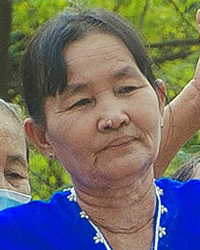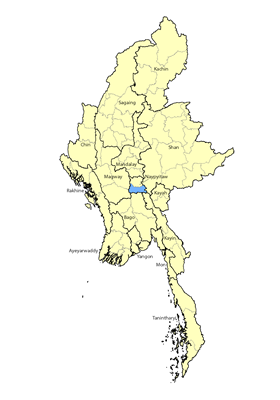The Htee Day Karen people are a newly-discovered people group with their own language. They were first visited several years ago by linguists, who determined that their language is distinct from other Karen varieties in Myanmar.1 The Htee Day Karen are one of four new groups nicknamed “White Karen” by other ethnicities. Although they live in areas separated from the larger Karen groups, such as the S'gaw and Pwo, the Htee Day Karen people acknowledge ancestral kinship with other Karen people.
Location: More than 20 distinct Karen tribes are profiled in this book, but none has a smaller population than the 2,000 Htee Day Karen, who inhabit 401 households in 14 villages in the southern part of Pyinmana Township. Pyinmana is part of the Naypyidaw Territory, which contains the recently-appointed capital city of Myanmar. Pyinmana was formerly part of the Mandalay Region, but in 2008 it was relocated to be part of the new national capital. Hundreds of millions of investment dollars have transformed the area into a modern metropolis, and Pyinmana Township now has a new highway running through it.
Language: More research needs to be conducted, but initial studies suggest Htee Day Karen is part of the Northern Karenic group of languages, which includes Lahta, Yinbaw, Yintale, Zayein, and the Kayan language spoken by the Padaung tribe. Many people can also speak Burmese, especially the younger generations who have been raised using Burmese at school and hearing it in the media.
For many centuries the various Karen tribes in Myanmar waged war against one another and against the government, whom they regarded as oppressors that had stolen their land and forced them into the hills. Fighting was often caused by disputes between families and villages. One historian noted: “Intervillage raids were common before British intervention. They were chiefly affairs of private vengeance sanctioned by the community. The aggrieved party, having obtained the chief's approval, organized a party of volunteers. The latter often disclaimed the right of their families to indemnity in case of death. The raid was undertaken before dawn. The inhabitants of the offender's village were either killed or captured…. Such raids did not necessarily result in long-lasting feuds; they were usually followed by a peace-making ceremony and negotiations by the losing village to redeem its captured.”
For centuries the Htee Day Karen have lived alongside the Burmese and have absorbed many of their cultural traits, including Buddhism. As early as the 1890s, a missionary sounded this warning: “The Karens are increasing in number. In religion, they are generally spirit or demon-worshippers, and are very superstitious; but they do not seem to be so firmly attached to their religion as the Burmans. Buddhism, as well as Christianity, is gaining many converts from their ranks.”
Buddhists reached the Htee Day Karen people before Christians arrived, and to this day most of the people adhere to Theravada Buddhism. The Gospel has also made an impact among this tribe, however, with several hundred Christians in their midst, most of whom are Anglicans.
Although many outsiders think the Karen people are mostly Christians with some animist influence, several Karen tribes are dedicated Buddhists with few or no followers of Jesus Christ. Over the years, evangelists generally found it much easier to reach animistic Karen communities, whereas those who had already embraced an established religion were usually much more set in their ways and proved more resistant to the Gospel when it was presented to them. No Scripture or any other form of Christian media has ever been produced in the Htee Day Karen language.
Scripture Prayers for the Htee Day Karen in Myanmar (Burma).
| Profile Source: Asia Harvest |











